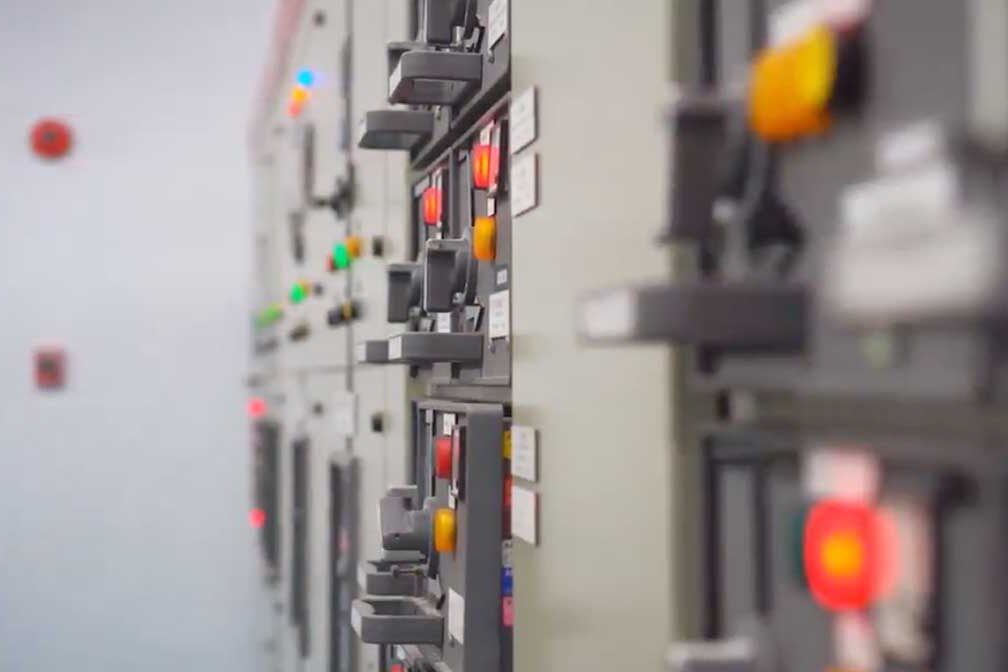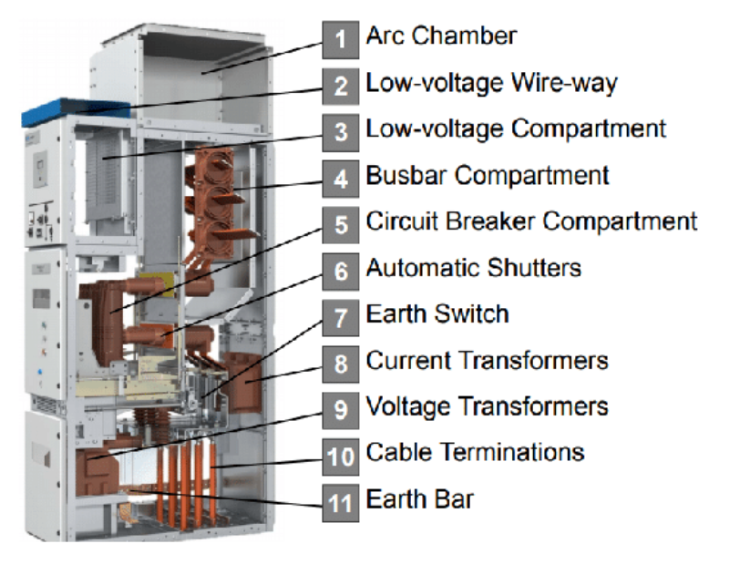Get to Know Switchgear: The Guardian of a Microgrid System
Share this post:

Switchgear – What is it?
In our everyday routines, electricity serves its ultimate purpose once consumed by the end user. Consider the simple act of turning on your bedroom lights upon waking up, it’s a seamless process with minimal thought. However, the journey of electricity extends beyond the immediate user requiring companies to transmit and distribute power to reach its final destination. This requires a reliable electrical energy management system. This system ensures a continuous and consistent supply of electricity to consumers maintaining the specified voltage, frequency, and waveform. To manage such a complex system it requires switching devices, otherwise known as switchgear.
Switchgear facilitates the distribution of electrical power from the source to various loads or equipment. It acts as a centralized point for controlling and directing the flow of electricity within a network. Switchgear also serves to isolate specific electrical circuits or equipment for maintenance and protect devices within the system due to overloads or short circuits. For energy providers, the aim is to achieve this seamlessly and efficiently while minimizing costs during the process.
Electrical Switchgear: The Team Manager of Power Distribution
Imagine a sports team gearing up for a game. Consider the players to be electrical devices and the game itself the functioning power system. The electrical switchgear is essentially the team manager. The team manager’s primary role is to strategize, organize, and control the team to ensure optimal performance during the game. Similarly, switchgear is responsible for managing, controlling, and distributing electrical power efficiently and safely in various applications.
Just like a sports team has different players with specific roles, switchgear is composed of these same various components each with a vital role within the system.
- Circuit Breakers – The Defense: Circuit breakers can be viewed as the defenders on a sports team. They protect the electrical system from overloads and short circuits just as defenders protect the goal in sports.
- Relays – The Strategists: Relays act as the strategists, monitoring the game (power system) and informing the team manager (switchgear) when something abnormal occurs. The switchgear will react just as strategists do in sports, deciding the team or electrical system's next move.
- Busbars – The Midfield: Busbars are like the midfielders, those who facilitate a smooth transfer of energy between different components. Busbars distribute power to various areas of the system, similar to how midfielders distribute the ball across the field.
- Disconnect Switches – The Substitutes: Disconnect switches allow for specific equipment to be disconnected for maintenance or in case of emergencies. The same could be said for how substitutes are brought in to relieve players in a sports environment.
- Control Panels – Coaches: Control panels act just like coaches, it’s where decisions are made to help better the chances of winning the game. They house the control devices, instruments, and other tools needed to monitor and manage the electrical system.
Just like in sports the overall function of the electrical system is “winning the game”. Switchgear ensures that effective coordination, strategy, and communication is in place to achieve a smooth transmission and distribution of power to the everyday end user.
Types of Switchgear
Having a basic knowledge of voltage will help with understanding the different class requirements as they relate to switchgear. Voltage refers to the electric potential difference between two points in an electrical circuit. Voltage is considered the force that pushes electric charges through a conductor, such as a wire. Furthermore, switchgear systems can be categorized into three classes – low voltage, medium voltage, and high voltage.
High voltage switchgears are designed to control power typically at 69KV and above, managing the flow of substantial electric power within an electrical network. These systems are used for long distance transmission of electricity from power plants to substations and then for high power industrial applications. High voltage transmission lines can carry electricity over hundreds of miles with minimal losses. Due to high voltage systems posing significant safety risks, these systems typically incorporate advanced safety features to enhance operational security.
Medium voltage switchgears operate typically within the 1KV to 69KV range. These systems are commonly employed for distributing electricity from power plants to substations and then to industrial facilities, commercial buildings, and larger residential areas. They are considered more efficient for transmitting electricity over longer distances than low voltage systems. Transformers are then often used to step down high voltage electricity from power plants to medium voltage levels for distribution.
Low Voltage switchgears are engineered for systems with up to 1KV. They are frequently situated on the low voltage side of power distribution transformers and can be found across a variety of industries.
Complexity of Switchgear
Due to the complex nature of an energy system, there can be multiple inputs and outputs resulting in constant changes in voltage levels numerous times. This requires a need for protective devices and measuring devices at every level that protect the system in case of an abnormal situation. Switchgear must perform a variety of functions and integrate these functions into a single system which all can add complexity to the design and operation.
Switchgear includes:
- Switches
- Fuses
- Circuits-Breakers
- Isolators
- Relays
- Control Panels
- Lightning Arresters
- Current Transformers
- Voltage Transformers

Conclusion
The bottom line, switchgear is complex yet needed for optimal power distribution. At every level switchgear acts as the guardian of electrical systems, ensuring the smooth and secure distribution of power. The complexity of switchgear comes from the integration of diverse components, the need for careful interconnection, compliance with standards, safety considerations, and the customization required to meet specific industry needs. Its role in preventing accidents, maintaining system integrity, and supporting efficient power management makes it an essential component in various industries and in today’s applications.
written by:
Cooper Hoefling
Director of Sales

